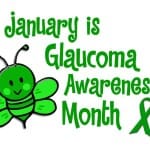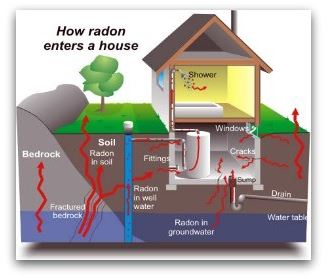 Glaucoma Awareness Can Help Save Vision for Millions
Glaucoma Awareness Can Help Save Vision for Millions
Glaucoma is a major cause of vision loss in the U.S. While it currently affects about 3 million Americans, estimates show 6.3 million could have glaucoma by 2050. The National Eye Institute (NEI) leads research toward better prevention, detection, and treatment of this potentially devastating disease. In its early stages, glaucoma typically has no symptoms. Late in the disease, once vision has been lost, it can’t be restored.
“Early detection by having a comprehensive dilated eye exam is key to protecting vision,” said Paul A. Sieving, M.D., Ph.D., director of the NEI. Anyone can get glaucoma, but African Americans over age 40, everyone over age 60, especially Mexican Americans, and people with a family history of glaucoma are at higher risk. People at higher risk should have a comprehensive dilated eye exam every one to two years.
Glaucoma is a group of diseases that damages the optic nerve, the bundle of nerve cells that relays visual information from the eye to the brain. In the most common form of glaucoma, called primary open angle glaucoma, nerve damage results from increased pressure inside the eye. Increased eye pressure occurs when the fluid that circulates in the eye drains too slowly.
For more information about glaucoma, comprehensive dilated eye exams, and financial assistance available for eye care, visit www.nei.nih.gov/glaucoma.
 Great News for Native Americans Battling Diabetes-End-Stage Renal Disease Rates Drop Significantly
Great News for Native Americans Battling Diabetes-End-Stage Renal Disease Rates Drop Significantly
by Dr. Ann Bullock, Director of the Division of Diabetes Treatment and Prevention
Diabetes affects the American Indian and Alaska Native population at almost twice the rate of the general U.S. population. To help end this health epidemic, Congress has committed $150 million per year through fiscal year 2017 for the continued prevention and treatment of this disease. The IHS Special Diabetes Program for Indians provides funding to more than 300 IHS, Tribal and Urban Indian health programs. Read about the successful Diabetes Program at IHS.
Though more work is needed, we celebrate some good news for American Indian and Alaska Native people this month, which is American Diabetes Month. The United States Renal Data System, the national registry that collects information on end-stage renal disease in the United States, recently released its 2015 Annual Data Report . This report stated that two important metrics for American Indian and Alaska Native health continued to change in the right direction: both new cases of end-stage renal disease (incidence) and the total cases of end-stage renal disease (prevalence) have declined for Native Americans. Even more remarkable, these improvements are outpacing those of all other racial groups in the United States.
End-stage renal disease is when the kidneys stop working well and the patient requires dialysis or a transplant. This kind of kidney failure is permanent and cannot be fixed. Most cases of end-stage renal disease are caused by diabetes or high blood pressure.
These data are truly amazing–it shows that we’re doing something unique in our communities that is working even better than in the general population. As the Indian Health Service strives to work closely with our Native patients and communities, it is encouraging to see these dramatic improvements in healthcare data for those affected by diabetes and other causes of end-stage renal disease.
Dr. Ann Bullock is board-certified Family Physician and the Director of the IHS Division of Diabetes Treatment and Prevention. DDTP provides information and resources to strengthen clinical, public health, and community approaches for diabetes treatment and prevention in Native American communities throughout the United States.
 National Radon Action Month
National Radon Action Month
Four Things You Can Do During National Radon Action Month
- Test your home – EPA and the U.S. Surgeon General recommend that all homes in the U.S. be tested for radon. Testing is easy and inexpensive.
- Learn more about testing your home, including how to obtain an easy-to-use test kit.
- Attend a National Radon Action Month event in your area – Look for radon events in your community.
- Spread the word
- Spend time during National Radon Action Month encouraging others to learn about radon and test their homes.
- Tell your family and friends about the health risk of radon. Encourage them to test their homes.
- Write an op-ed or letter to the editor using samples from the event planning resources.
- Attract media attention by working with a local official to get a radon proclamation.
- View or order EPA’s free radon publications
- Buy a radon-resistant home – If you are considering buying a new home, look for builders who use radon-resistant new construction. Read more about radon-resistant new construction, “Building Radon Out: A Step-by-Step Guide to Build Radon-Resistant Homes“.
- Build Green: It’s Easy to Build New Homes Radon-Resistant …”The good news is you can build your customers a safer, healthier, radon-resistant home. The techniques to prevent radon from entering a home are practical and straightforward for any builder. It’s an inexpensive way to offer families a benefit that could reduce their risk of lung cancer. And it’s a smart way to build trust between you and your customer.” Fuad Reveiz, Member of the National Association of Home Builders
Leave a Reply